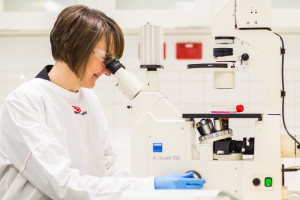

Nick Scott is an Econometrician at the Burnet Institute in Melbourne, Australia. Since completing his mathematics PhD in 2012, he has been modelling infectious disease transmission among vulnerable populations to inform public health policy.
Elimination of hepatitis C virus (HCV) infection is a serious global consideration. Could you give an outline of current efforts to eliminate the infection?
In most developed settings, new HCV infections and HCV-related liver disease occur among largely disjoint populations. New HCV infections primarily occur among people who inject drugs (PWID) through the sharing of injecting paraphernalia, but the slow progression to liver disease means that the burden of disease is increasingly occurring in an aging population.
Separate approaches are currently being taken to control transmission and to reduce mortality. Initiatives such as needle and syringe distribution programs and opioid substitution therapy for PWID—which has been shown to reduce injection frequency and injecting risk behavior—aim to limit the spread of infection, while interferon-based treatments are currently available to prevent late stage liver disease. However, these treatments are not particularly effective and have significant side effects for some patients.
How are the new interferon-free therapies likely to change this?
Interferon-free direct-acting antiviral treatments have an extremely high efficacy and minimal side effects. They can not only prevent most HCV-related liver disease, but are being considered as a method for controlling transmission through ‘treatment-as-prevention’—treating asymptomatic PWID in order to lower HCV prevalence, and subsequently reduce incidence.
Unfortunately, their high cost means that they are not yet available in some countries, and when they are, a treatment-as-prevention approach is likely to require significant initial spending.
Are there any HCV vaccines under clinical development?

Research and development is continuing for several different HCV vaccines, with much optimism in the field. In particular, a co-author (Associate Professor Heidi Drummer) of this paper is currently working on one that is in late pre-clinical development, about to commence phase I clinical trials.
What did your study do and find?
Our study used a mathematical model to determine how much additional prevalence reduction could be achieved by vaccinating PWID after treatment (in a treatment-as-prevention paradigm), and whether a vaccine could reduce the number of treatments needed to achieve public health goals.
We found that in settings where the prevalence of chronic HCV is high among PWID, such as Australia, Indonesia, the UK and the USA, even a low-efficacy vaccine could provide significant additional prevalence reduction beyond treatment alone, and would lead to substantially fewer treatment courses being needed to achieve prevalence reduction targets. This is likely to reduce costs.
A low-efficacy vaccine could provide significant additional prevalence reduction beyond treatment alone, and would lead to substantially fewer treatment courses being needed to achieve prevalence reduction targets.
Do you think vaccination will have a major impact on HCV elimination?
These findings suggest that even a vaccine that does not provide perfect protection is worth pursuing, and that vaccination should play a key role in HCV elimination.
In particular, an approach such as vaccinating after treatment provided significant additional benefit in the model both in the short and long term, and would be practical since the HCV RNA status of patients would already be known.
Are there any limitations associated with using mathematical models to assess vaccine effectiveness?
As with any mathematical model, ours was based on a theoretical framework and had uncertainty in its parameters. To counter this, we explored a variety of prevalence settings and vaccine efficacies, and found similar results when a range of population and transmission characteristics were tested, which we believe characterize the range of epidemics found in different countries.
What future work is required to extend your findings?
A vaccine should therefore be considered as a part of future HCV elimination strategies.
As clinical trials of HCV vaccines continue, their expected efficacy, duration of protection and other properties will become clearer.
This will enable more accurate and sophisticated models, such as network models, to be used to test their effectiveness.
How do you think HCV elimination will eventually be achieved?
New treatments are likely to be the major component of any elimination strategy. However, our results suggest that combining treatment with a HCV vaccine, even if it were only modestly efficacious, is likely to be a more cost-effective approach. A vaccine should therefore be considered as a part of future HCV elimination strategies.
 BMC Medicine: passionate about quality, transparency and clinical impact
BMC Medicine: passionate about quality, transparency and clinical impact
2014 median turnover times: initial decision three days; decision after peer review 41 days
Comments